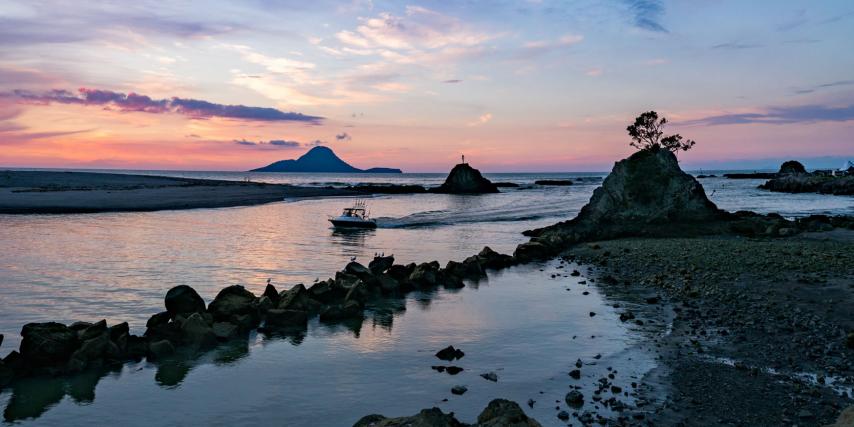Whangarei
17.89°C

Whangarei
17.89°C

Waitakere City
16.98°C

Manukau City
17.11°C

Papakura
24.46°C

Hauraki
17.26°C

Waikato
17.67°C

Matamata
18.46°C

Hamilton
17.51°C

Otorohanga
18.52°C

Rotorua
16.6°C

Taupo
15.44°C

Tauranga
19.27°C

Kawerau
18.6°C

Whakatane
19.64°C

Gisborne
15.51°C

New Plymouth
16.98°C

Stratford
8.97°C

Ruapehu
14°C

Wanganui
17°C

Palmerston North
16.41°C

Wairoa
19.19°C

Hastings
18.84°C

Napier
18.49°C

Masterton
15.49°C

Carterton
15.66°C

Porirua
15.99°C

Lower Hutt
16.45°C

Wellington
15.79°C

Tasman
9.35°C

Nelson
16.27°C

Marlborough
3.22°C

Kaikoura
15.48°C

Christchurch
12.59°C

Ashburton
12.52°C

Timaru
13.37°C

Waitaki
11.32°C

Waimate
13.08°C

Queenstown
12.38°C

Dunedin
14.33°C

Southland
9.98°C

Gore
11.31°C

Invercargill
12.06°C

Blenheim
14.73°C

Te Anau
27.35°C

Wanaka
11.17°C

Kaikoura
13.38°C

Stratford
13.54°C

Upper Hutt
15.9°C

About
Te Wairere Waterfall, also known as Wairere Falls, stands as a majestic natural wonder in the heart of New Zealand's North Island. Soaring to a height of approximately 153 meters (502 feet), it's one of the North Island's tallest waterfalls. Nestled in the picturesque Kaimai Range, just a stone's throw from Matamata in the Waikato region, this cascading masterpiece lures nature enthusiasts and adventurers alike.
Embark on a journey through lush, verdant forests, where well-maintained hiking trails offer options for all levels of explorers. From the lower lookout, a short walk provides stunning vistas of the falls, while those seeking an extra thrill can tackle the more challenging path to the upper lookout.
The Te Wairere Waterfall setting is a serene sanctuary for all. Whether you're a local or a traveler, the falls' accessibility is a mere hour's drive from Rotorua and Auckland, making it a perfect day-trip destination. When visiting, exercise caution and wear suitable footwear, as safety is paramount. Experience the awe-inspiring Te Wairere Waterfall and revel in the natural beauty that New Zealand so generously bestows.
Ohope Scenic Reserve contains steep hill country extending south of the Ōhope escarpment. The reserve forms part of a significant coastal landscape and has outstanding scenic and conservation values. The reserve includes one of the country's largest remaining coastal pohutukawa forests.
Ngāti Awa hapu occupied and established early relationships with the Ōhope area. In the late 18th century, Ngāti Hokopu and Ngāti Wharepāia hapu of Ngāti Awa were prominent within the reserve and surrounding areas, and they remain so today.
A number of pā sites near Ohope Scenic Reserve demonstrate the strong historical associations of Ngāti Awa with the area. Eastwards, near the coast below the reserve, are the two strategic pā called Maungateone and Te Paripari. Further along Ōhope escarpment were Mihi Marino and Raukawarua Pā. There were pā within the reserve area but their names have been lost over time.
Particular stretches of Ohope Scenic Reserve have their own traditions. East of Otumanu along the cliff face is the path known as Te Ara-aka, which means ‘pathway of the vine’.
Ohope Scenic Reserve was rich in natural resources and provided an abundance of wildlife, food and medicinal resources for Ngāti Awa hapū. The area’s use is evidenced by the discovery of artefacts along the creek bed of Te Hiku o te Tuna.
Ngāti Awa have always maintained considerable knowledge of the lands of the reserve - their history, traditional trails, places for gathering food and other taonga, and ways in which to use resources. The ethics of sustainable resource management and conservation have always been, and continue to be, at the heart of the relationship of Ngāti Awa with Ohope Scenic Reserve.
Ngāti Awa representation on the Whakatāne Kiwi Trust and active involvement in animal predator control work on the adjoining Ngāti Awa Farm are two of the many activities that demonstrate the enduring relationship of Ngāti Awa with the Ohope Scenic Reserve. Revival and expansion of this relationship is important to Ngāti Awa.
Ohope Scenic Reserve is ecologically important, supporting nationally significant pohutukawa forest and North Island brown kiwi.
The reserve is surrounded by land that is used for a variety of purposes including residential, landfill, road reserve and farming. Ongoing management of pest plants and animals in the reserve and on neighbouring private properties is needed to ensure that the health of the reserve is protected and enhanced.
There are four main streams and several tributaries within Ohope Scenic Reserve, all of which have significant ecological values. The Maraetotara Stream, for example, has been identified as a habitat for giant kokopu, short-jawed kokopu, short-finned eel, long-finned eel, red-finned bully, torrent-fish, common bully and common smelt. Te Hiku o te Tuna Stream, running adjacent to Ohope Hill Road and discharging to the coast at Ōhope, contains banded kokopu.
The reserve, a popular walking and running area, is highly valued by the community for its recreational opportunities, and for the outstanding natural and cultural landscape which it provides so close to Whakatāne, Ōhope and the coast.
White Pine Bush, adjacent to SH2 between Awakeri and Taneatua, is a 4.5 hectare reserve containing one of the last stands of lowland kahikatea forest in the area. The trees in the forest area are mainly kahikatea, tawa, pukatea, and nikau. A bridge across Waioho Stream and a 250-metre long, level track suitable also for wheelchairs, has been formed as a loop through the forest. Information panels show details of the forest, the birds, and the predators.
A parking area is accessible directly from SH2, between Awakeri and Taneatua, and about 20km south of Whakatane. There are no toilets or other facilities at the site. A gumboot fence forms part of the boundary to the carpark. The walk can easily be done in 10 minutes, including time for reading the information panels. It would be suitable as a short break for travellers driving through SH2.
The parking area off SH2, the gumboot fence, the bridge across Waioho Stream, and the entry to the loop walk through White Pine Bush reserve.
If you're keen for an easy cycling cruise or walk with lots to see, Warren Cole Walk and Cycleway along the riverside trail is superb. One trail end is by the Whakatāne River bridge on Landing Road; the other is near the Whakatāne Heads. It's fully sealed/paved.
You'll be alongside the river the whole way. Near the Whakatāne River mouth, you can watch the Pacific Ocean swell rolling in. Upriver from here, the Whakatāne wharves usually have plenty going on, perfect if you're with kids. About midway on the track, the river has large areas of salt marsh. If you enjoy bird-watching, there are many species to spot.
The Warren Cole walkway starts at Landing Road and follows the southern bank of the river to the Whakatāne Gardens, the Skate Park and River Edge Playground. The path leads onto The Promenade, which passes the Whakatāne Visitor Information Centre, and then onto the River Edge walkway to The Heads.
Bordered by the Whakatāne River on one side and bush-clad cliffs on the other, Whakatāne's commercial centre must have one of the most scenic settings any town could wish for. The major historic and scenic features of the town are included in this interesting and easy walk, which follows the river to the Whakatāne Heads where the river meets the sea.
The Whakatāne wharf was once a busy coastal shipping cargo and passenger port. The wharf and estuary are now homes to many commercial and recreational fishing boats, the Whakatāne Sports Fishing Club and restaurants. The riverbank path leads downstream through the Mataatua Reserve. This reclaimed land covers the original landing place of the Mataatua waka and includes a shelter, which houses a replica of the Mataatua waka.
Further on is the big game fishing weigh station and launching ramp, often a hive of activity as the waters offshore are renowned for tuna, billfish and shark fishing. Past the playground is "The Heads" where the Whakatāne River rushes into the sea through a narrow gap studded by rocks. Across the river, a bronze statue of Wairaka stands atop the largest rock. This commemorates her courageous defiance of tradition which not only saved the Mataatua waka but gave the town and district its name.
Returning towards the town centre, along the road is Muriwai's cave. Muriwai was an aunt of Wairaka and lived in the cave in the latter part of her life. A famed priestess, her advice was much sought after.
After more than 130 years away, New Zealand's only repatriated and most-travelled Māori meeting house, Mataatua Wharenui, has come home. It stands once again as the unifying soul of the Ngāti Awa, one of the Māori tribes of the Bay of Plenty.
Built in 1875, Mataatua Wharenui travelled to Sydney, Melbourne, Victoria and Albert Museum in the U.K., Dunedin and Otago. Finally, in 2011 it was rebuilt in its place of origin, Whakatāne.
Your journey at Mataatua will ignite the soul within as you discover the extraordinary story of the house that has travelled through time. Mataatua is a living and breathing being, and our experiences provide an opportunity for intimate engagement with the people of Ngāti Awa.
The track includes three major scenic reserves - Kohi Point Scenic Reserve, Ōhope Scenic Reserve and Mokorua Scenic Reserve. The walkway is accessible to most people, regardless of fitness level, because it can be undertaken in sections or as a 16-kilometre round trip. The total trip can be completed in five to seven hours. Information boards placed in strategic locations tell much more of the district's natural and historic heritage.
If you intend to complete the entire 16-kilometre round trip, it is recommended you do so in a clockwise direction; the track is far more challenging going in the opposite direction.
Embrace the incredibly scenic Kōhī Point walk and appreciate ancient pā sites, native bush and birdsong, stunning cliff-top views and the picturesque, secluded Ōtarawairere Beach. This track is a must for keen walkers.
Note that Ōtarawairere Beach is inaccessible on foot during high tide. Please check with the Whakatāne Visitor Information Centre for the latest tide information. You can also access tide tables at MetService
The Lady on the Rock statue is widely recognized as a symbol of our region, unveiled at the Whakatāne Heads in 1965 as a memorial to the wife of Sir William Sullivan who was a driving force in Whakatāne during the 20th century. The striking bronze statue atop Turuturu Rock lies at the mouth of the Whakatāne River and commemorates the bravery of Wairaka, the daughter of Toroa, captain-navigator of the Mataatua waka.
When the Mataatua waka first arrived at Whakatāne after making a perilous voyage from Ngāti Awa’s ancestral homeland of Hawaiki 600 years ago, the men left the women alone in the canoe while they went ashore. When the canoe started to drift back to sea, Wairaka defied the tapu that forbade women to handle a canoe and seized the paddle to bring the waka back to shore crying.
Visitors to Whakatāne are drawn to this iconic statue, which stands as a testament to the enduring heritage of the region. It invites all to reflect on the remarkable stories that have shaped New Zealand and celebrates the courage and fortitude that continue to define its people.
The Statue of Wairaka is not just a piece of art but a living tribute to the legends and legacies that have enriched New Zealand's cultural tapestry. It invites us to remember and honor the remarkable women who have shaped history and inspires us to forge our own path with courage and determination.